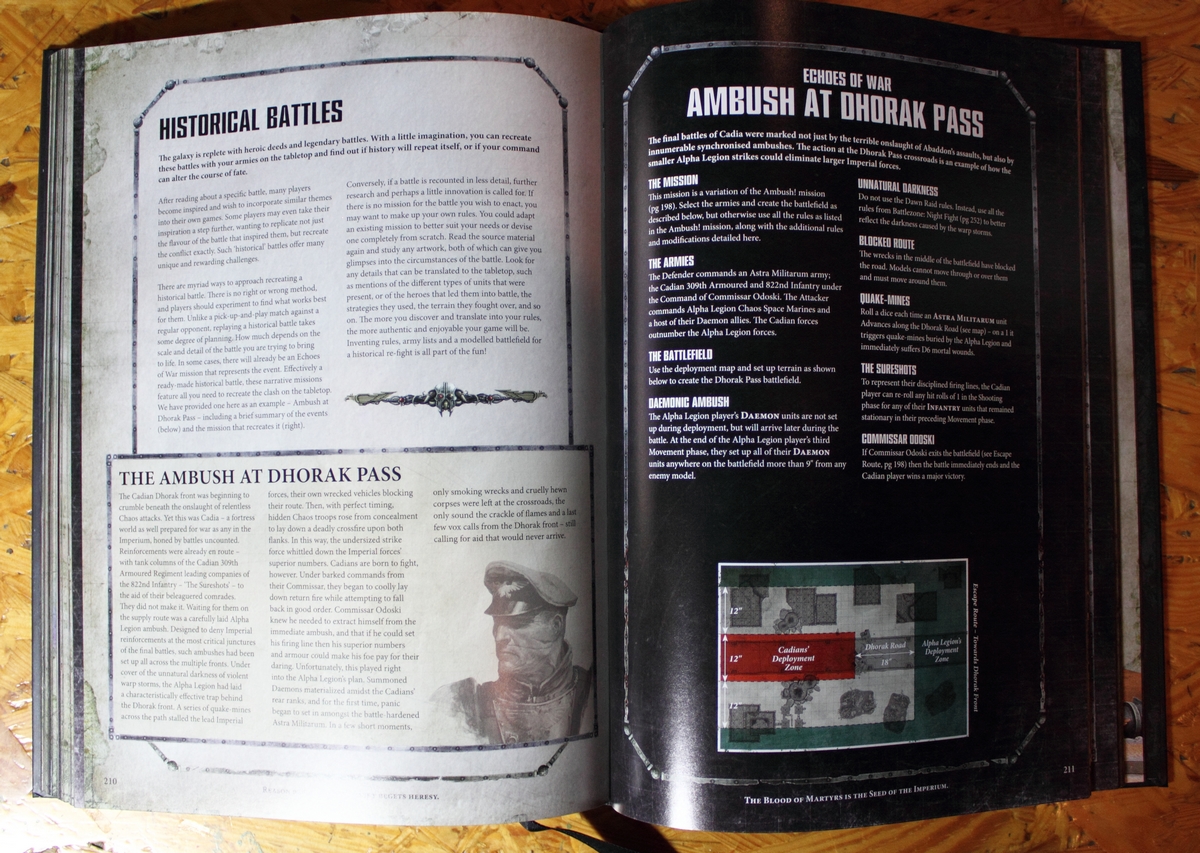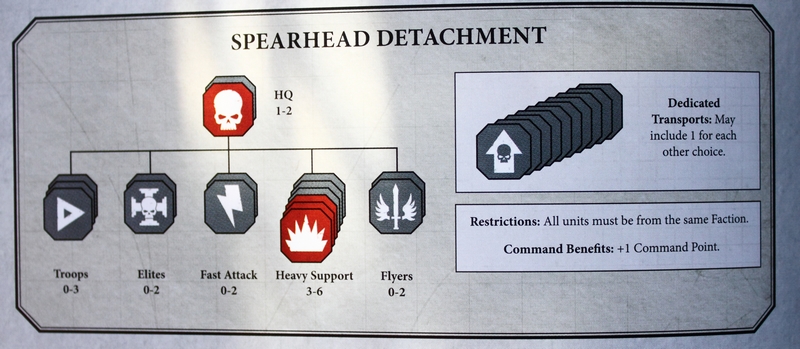

In this part 3, I’ll go through the rest of the rulebook, discuss all the options for setting up games presented and the advanced rules.
The last circa 100 pages contain suggestions and rules for how to set up games of Warhammer 40,000.
Basically, the book suggests three approaches to setting up your games (even though the borders between those are blurry):
Open Play – “Do whatever the fudge you want”. The rulebook gives several hooks for inspiration and three general scenarios so you can hop right in.
GW introduced a curious concept now – Power Levels. Going back to our IG infantry squad, in the upper left we can see the type of unit they are (Troops) and a Power Level value of 3:


This value gives us a relative idea of the unit’s tactical strength on the table. Units have a Power Level each, some upgrades increase this value. The combined Power Level of an army is an easy and fast way to calculate the relative strength of what the players put on the table. In many scenarios, the player with the lower total Power Level gets some perks like choosing the side of the table they start on, who goes first and such.
This feels like a mid-way between just throwing your models on the table and calculating exact points values. Very interesting indeed.
Narrative Play – In this section we get six thematic scenarios with an attacker and a defender and a few scenario-specific special rules, and even a historical battle!
This section also introduces the concept of Battle-Forged armies which are elaborated on in the Advanced rules.
Matched Play – That’s the one you’ll read about online, along with endless discussions about points, why unit X is “unplayable right now” and such. This one uses the regular old points values plus Detachments (= “Battle-Forged” armies) and Command Points.
In this section we get another 12 missions which are more suited for armies of equal size. On top of this: Tactical Objectives, usually 6 per game are put on the table. For each of them you roll for their specific rules (out of 56 possible outcomes) for what you have to achieve to gain victory points from this specific objective. These offer a variety of objectives, from “control a specific objective for two consecutive turns for X victory points” over “kill a flying enemy unit” to “score X victory points for having units in the enemy deployment zone”.
Advanced Rules
This section mostly contains more rules on various ways of deploying, making up missions and scenarios and so on.
It starts with Detachments, the lines along which Battle-Forged armies have to be organized. These basically work like the old Force Organization Charts.
  |
| Example of a Detachment |
The red choices are mandatory minimum, the rest is optional. Detachments come with certain restrictions (in most cases just the fact that they must be of the same faction. That being said, all Imperial units have the Imperium faction for example, meaning you could mix Blood Angels and Sisters of Battle within the same detachment.
The more restrictive your detachment the more command points you receive in return. Those you can use to buy Stratagems, which are little perks either based on and listed next to the specific mission or generic ones, giving re-rolls or other niceties.
If that wasn’t enough to make games more varied and interesting GW also included extra special conditions in Night Fighting, Fire and Fury (taking place amidst a cataclysmic battle in the sky and on the ground) and Psychic Maelstrom. On top of that the Planetstrike, Cities of Death, Stronghold Assault and Death from the Skies found their way into this book as a four page mini-supplement each.
In the end, we also get two pages on multiplayer battles including special rules and a surprisingly good section on campaign gaming.
Phew. Much, much stuff for making your games more interesting.


Next time: The thrilling conclusion in terms of the rules (after that we’ll get to the miniatures!) and my opinion on 8th edition as a game.
Do you like our tutorials and reviews? Here is what you can do to support us: Check out the websites of our sponsors, place your next orders at Wayland Games by clicking here or on the banner on the right. Thank you very much, we appreciate any help to keep us going.








Excellent review, I´m longing to read your final comments and opinion about this new edition.
Regards